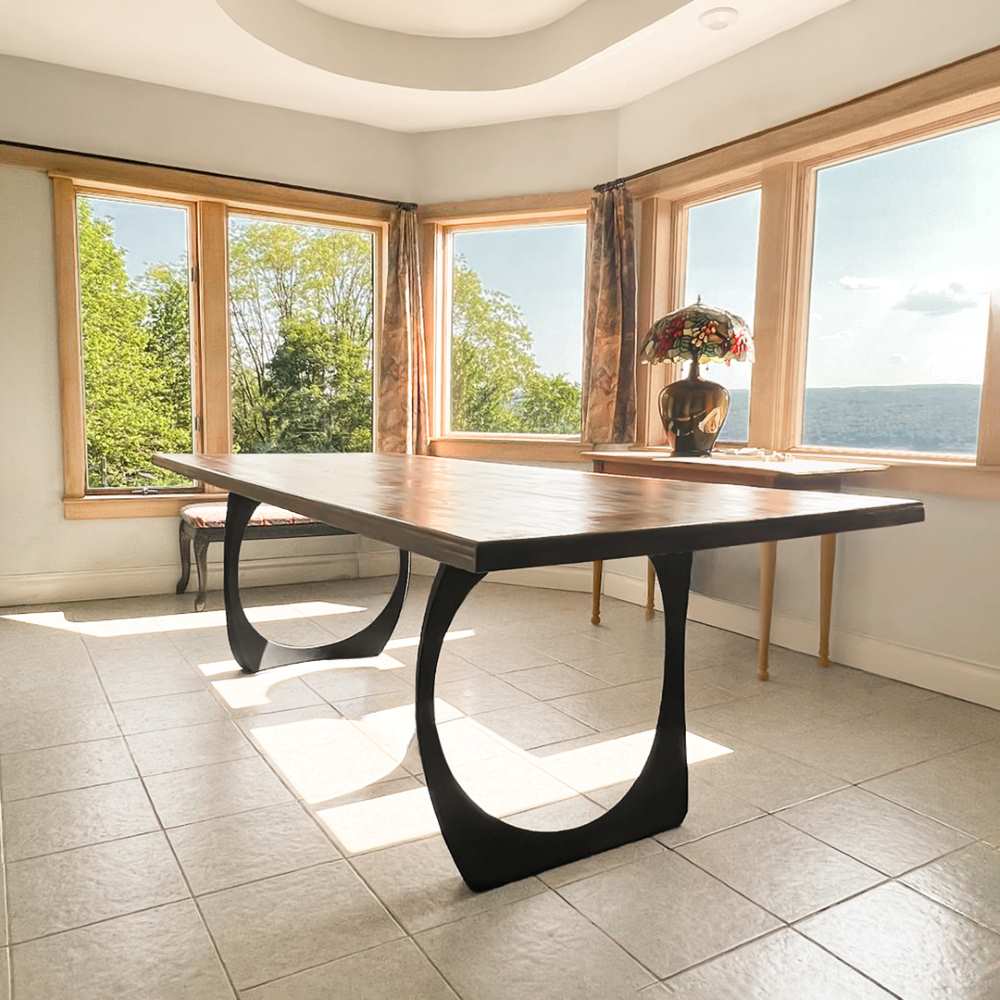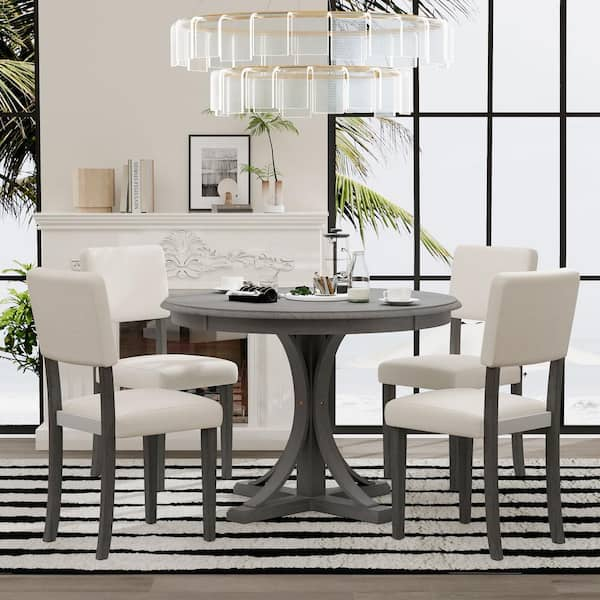From Traditional to Modern: Discover the Ideal Eating Room Table Legs for Your Style
The choice of dining-room table legs plays an essential duty in defining the general character of your space, bridging the void between traditional craftsmanship and modern aesthetics. While timeless styles such as cabriole and turned legs stimulate a sense of timeless sophistication, contemporary designs like hairpin and geometric options offer a possibility for striking aesthetic interest. Reviewing the right equilibrium in between these styles requires a nuanced understanding of your existing design and personal preference. As you consider these components, the question continues to be: exactly how can you seamlessly incorporate these varied leg designs to create a harmonious eating experience?
Recognizing Table Leg Styles
The variety of dining-room table leg designs can significantly influence both the aesthetic appeals and performance of the area. Each leg style contributes unique visual elements and practical attributes, catering to diverse layout choices and use demands. Understanding these styles is crucial for selecting the appropriate table that lines up with your overall interior layout vision.
For example, tapered legs offer a clean, classic look that can improve a room's sophistication, while stand bases offer stability and make best use of legroom, making them excellent for smaller spaces. Barrette legs, a trademark of mid-century modern layout, present an industrial panache, enabling for an airy, open feeling. Trestle legs stimulate rustic appeal, giving robust assistance and a sense of eternity.
Additionally, the choice of products plays a significant duty. Wooden legs can bring heat and texture, whereas steel options commonly convey a streamlined, contemporary vibe. Inevitably, comprehending table leg designs is vital for developing a cohesive eating area that shows individual style while making certain functionality and convenience. By thoughtfully thinking about these elements, you can improve both the useful and aesthetic allure of your dining area.
Typical Table Leg Options
When selecting dining-room table legs, standard alternatives frequently symbolize ageless style and workmanship. These designs reflect a rich heritage and a commitment to high quality, making them suitable for those that value timeless visual appeals.
One of one of the most iconic traditional leg styles is the cabriole leg, characterized by its graceful curved shape. This design frequently features decorative carvings and is most typically found in Queen Anne and Chippendale furniture. Another popular option is the transformed leg, which flaunts a collection of smooth, rounded forms that supply a traditional look while maintaining stability.
Furthermore, the straight leg, while simple, offers a sturdy and basic structure that can blend seamlessly with a selection of tabletop designs. For those drawn to ornate detailing, claw-and-ball feet legs stimulate a feeling of magnificence and can act as a spectacular focal point in any kind of eating space.
Lastly, stand bases, although not strictly legs, provide a different standard choice that enables enough legroom and can be magnificently carved. Each of these traditional leg styles adds to the total atmosphere of an eating area, marrying feature with aesthetic allure.

Modern Table Leg Styles
Modern table leg layouts use a diverse variety of styles that stress cutting-edge materials and tidy lines. These designs commonly prioritize capability while serving as striking centerpieces within an eating area. Minimal aesthetic try this out appeals prevail, with legs crafted from products such as metal, glass, and crafted wood, which add to a ventilated and contemporary feel.
One prominent layout is the hairpin leg, defined by its slim, tapered structure that gives stability without overwhelming the table top (dining room table legs). This design is frequently discovered in mid-century modern-day furniture and can effortlessly match numerous dining table shapes. An additional fad is using geometric shapes, where legs might tackle asymmetrical or angular types, including aesthetic interest and a touch of artistry

Blending Designs for One-of-a-kind Rooms
Usually, home owners look for to produce distinct dining spaces that mirror their individual style by blending various layout aspects. This technique permits the incorporation of varied appearances, causing an unified yet distinctive setting. As an example, matching a rustic wooden table with streamlined, contemporary metal legs can develop a distinctive comparison that elevates the area's general appeal.
In addition, integrating vintage table legs with modern tabletops can stimulate a sense of background while preserving a modern sensibility. Such mixes not only display private preference however additionally motivate creative thinking, enabling home owners to curate an area that really feels both personal and welcoming.
Shade plays an important duty in this blending procedure; selecting table legs that match or comparison with the existing shade plan can boost visual rate of interest. Whitewashed legs can soften the daring of a dark table surface area, producing a balanced aesthetic.
Tips for Choosing the Right Legs
Selecting the right table visit legs is necessary for accomplishing both capability and aesthetic appeal in your eating room. Begin by considering the general design of your room. Conventional setups profit from legs that feature elaborate makings or transformed layouts, while contemporary spaces may require streamlined, minimal styles.
Next, evaluate the height and security of the legs. dining room table legs. Typical dining tables range between 28 to 30 inches in height, so make sure the legs match this dimension for convenience. In addition, durable products, such as wood or steel, can enhance stability and longevity
Assess the leg shape as well-- choices include directly, tapered, or stand layouts. Straight legs supply a timeless appearance, while conical legs can include a touch of style. Pedestal bases provide ample legroom and are perfect for smaller spaces.
Conclusion
In summary, picking the ideal eating space table legs requires mindful factor to consider of both standard and modern styles. By integrating leg style, height, and product with the general décor, a natural and inviting ambience can be accomplished.
The selection of eating room table leg designs can considerably affect both the looks and functionality of the room. Ultimately, recognizing table leg styles is crucial for producing a natural dining location that reflects personal design while guaranteeing usefulness and comfort.One of the most famous traditional leg styles is the cabriole leg, identified by its graceful rounded form. Straight legs provide a traditional appearance, while tapered legs can include a touch of elegance.In summary, choosing the ideal dining space table legs calls for careful factor to consider of both typical and modern styles.
Comments on “The Impact of Dining Room Table Legs on Your Table's Overall Design”